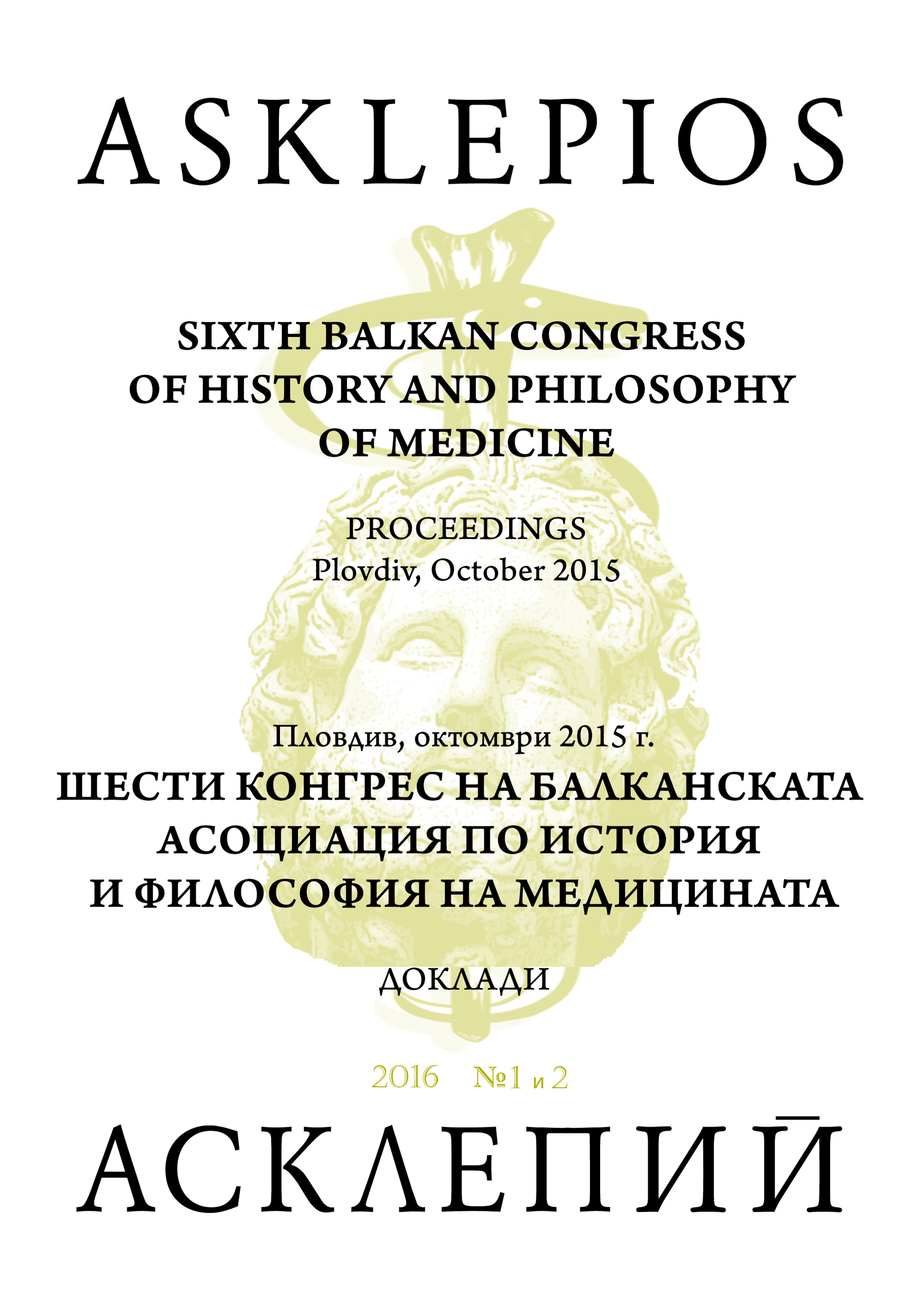Епидемиологични историко-организационни проучвания на социално значимите заразни заболявания във Варненски регион и възможностите на епидемиологичния контрол за периода след Освобождението през 1878 г. до 09.ІХ. 1944 година
Epidemiological, historical and organizational studies of socially significant infectious diseases in the region of Varna and possibilities of epidemiological surveillance for post-Liberation period in 1878 until 09.09.1944
Author(s): Elena Ivanova, Rumen KonstantinovSubject(s): History, Social Sciences, Cultural history, Local History / Microhistory, Social history, Modern Age, Recent History (1900 till today), Health and medicine and law, 19th Century
Published by: Балканска асоциация по история и философия на медицината (БАИФМ)
Keywords: : Infectious diseases; Varna; History of Medicine
Summary/Abstract: After the Liberation in 1878, the restored state of Bulgaria laid the foundation of modern public healthcare. Particular attention was paid to epidemiological surveillance on socially significant infectious diseases. The efforts of all statesmen, mayors, municipal councilors created the first sanitary laws, the opening of state hospitals, municipal and city health centers. They introduced mandatory reporting of contageous (clinging) diseases, as well as the mandatory vaccination against smallpox. The measures taken to limit the spread of infectious diseases were insufficient because of shortage of medical staff, bed capacity, poor living conditions, low level of health culture of the population, and the years after the war, which was a prerequisite for the high infectious morbidity of the population in Varna region during this period. Purpose: To carry out epidemiological, retrospective, historical and logical study and analysis of socially significant infectious diseases for the period 1878 – 1944 in the region of Varna and concomitant organizational and practical anti-epidemiological and prophylactic measures. Materials and methods: The reported information about registered socially significant manageable and unmanageable infections in the region of Varna for the period 1887–1944, data about conducted immunizations for the period 1887–1944 have been found and actively explored from archival sources. The data obtained has been analyzed and presented through epidemiological, mathematical and statistical, graphical and other methods. Results: In 1884 Dr. B. Oks moved the Ospel Institute from Razgrad to Varna, which was a turning point in the development of health care in the town. The main activity of the institute was the production of anti-smallpox vaccine, its dissemination and application in Bulgaria. Vaccination in Varna was regulated in 1888–89 by a couple of orders of Kr. Mirski, the Mayor of Varna, based on the Regulation for vaccination and re-vaccination in Bulgaria (published in Official Gazette 88/1885), entitling the municipal doctors, medical paramedics, volunteer vaccinators to perform the vaccination of the population. It was compulsory the vaccination of each child before the age of one and re-vaccination at the age of 8 and 15. In March 1895 cases of disease of smallpox were registered in the town, which required the organization of general vaccination and keeping a strict record of it in the Municipal Department. Information about the incidence in Varna of acute infectious diseases by nosological units for the monitored period comes from incomplete, scarce-data tables. Epidemics of measles were registered in 1902, scarlet fever – in 1905, typhoid – in 1909, bad cough in 1910. After the year 1920 the infectious morbidity was still high. In 1924 and 1925 the morbidity of typhoid was epidemic. In 1936 immunization for typhoid was applied to 9 000 people in the region of Varna. The epidemic nature of some infectious diseases needed taking measures to protect the population. After creating the disinfection station and chemical laboratory, a bacteriological and anti-rabies station was created in 1936, in the town of Varna as well. It covers with anti-rabies vaccine all the children and adults bitten by rabid animals from the regions of Varna and Shumen.
Journal: Асклепий. Международно списание по история и философия на медицината
- Issue Year: XI/2016
- Issue No: 01+02
- Page Range: 183-189
- Page Count: 7
- Language: Bulgarian
- Content File-PDF

